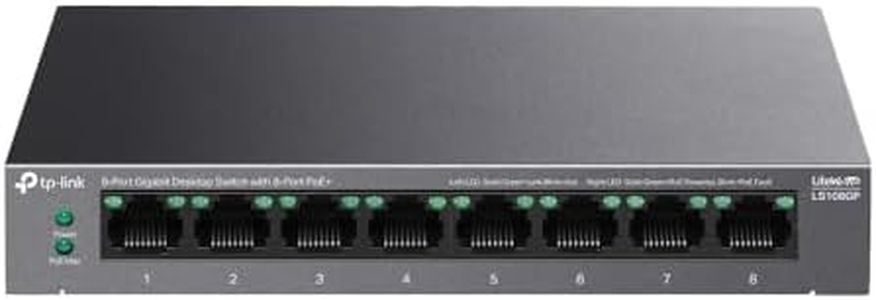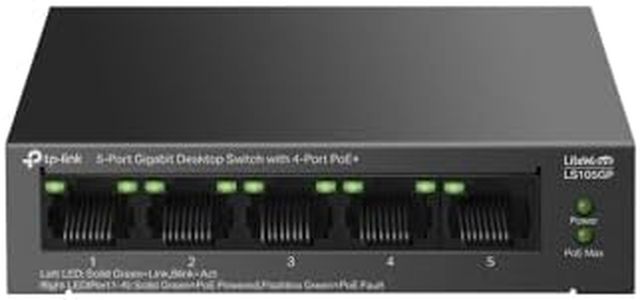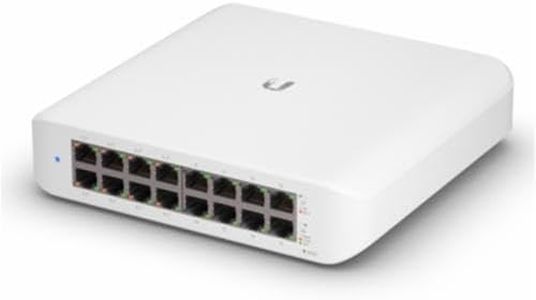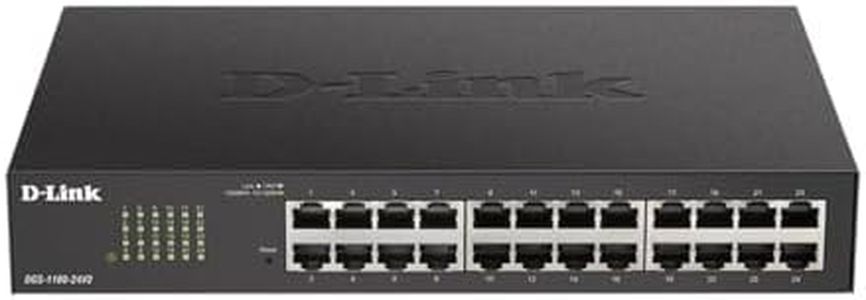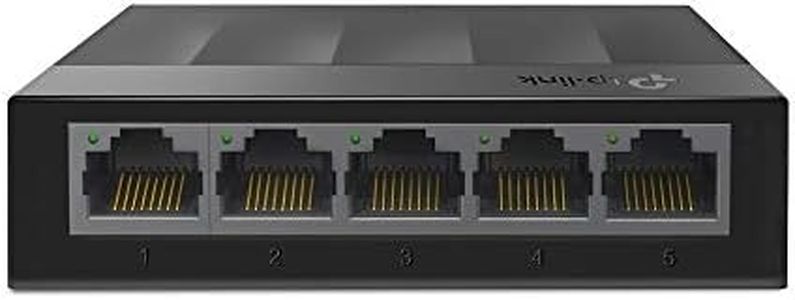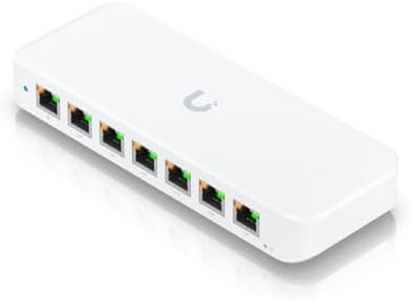We Use CookiesWe use cookies to enhance the security, performance,
functionality and for analytical and promotional activities. By continuing to browse this site you
are agreeing to our privacy policy
10 Best Gigabit Switches
From leading brands and best sellers available on the web.Buying Guide for the Best Gigabit Switches
Shopping for a gigabit switch can make your home or office network much faster and more reliable. A gigabit switch is a device that connects several wired devices, like computers, printers, or other network gear, and allows them to share data quickly over a wired network. Choosing the right switch means thinking about how many devices you’ll connect, what features would help manage your network, and the environment where you’ll use it. The right gigabit switch will be easy to manage, meet your speed needs, and provide reliable connections for years to come.Number of PortsThe number of ports tells you how many devices you can connect to the switch at once. This is important because you need enough ports for all the computers, printers, smart TVs, or gaming consoles that will use the switch. Switches come in various sizes, usually with 5, 8, 16, 24, or 48 ports. For small home setups, 5 or 8 ports may be enough. For a busy office or if you expect your network to grow, a switch with 16 or more ports might be better. It’s wise to count up all your current devices and consider a few extra ports for future needs.
Managed vs UnmanagedA switch can be managed or unmanaged. Unmanaged switches are simple—just plug and play. Managed switches let you control your network, monitor traffic, or set rules. This is important because managing the network helps with larger, more complicated environments but adds setup steps. For simple home use or basic networking, unmanaged is easiest. If you need to divide traffic, set up guest networks, or track bandwidth, a managed switch is the way to go.
PoE (Power over Ethernet)PoE means the switch can send electric power through its network cables, powering devices like cameras or Wi-Fi points without separate power cords. This matters if you want to reduce clutter or install devices where plugging in a power adapter isn't convenient. Some switches offer PoE on all or some ports. If you use PoE devices, make sure the switch can handle enough total power for all of them. If you won’t use PoE, you can skip this feature.
Form Factor (Desktop vs Rackmount)Form factor refers to the physical shape and where the switch is meant to sit. Desktop switches are smaller and designed to stay on a desk or shelf. Rackmount switches are bigger and designed to fit in networking racks, common in offices or server rooms. For home or small office setups, a desktop switch is often more convenient. If your gear goes in a dedicated rack, choose a rackmount style.
Switching CapacitySwitching capacity means how much total traffic the switch can handle at once without slowing down, measured in gigabits per second (Gbps). This is important to ensure your network stays speedy when all the devices are working at once. Values often go from 10 Gbps for small switches up to hundreds for large ones. For typical home or small office use, basic switch capacity will almost never be a limit. In busier settings with lots of high-speed devices, look for a higher switching capacity.
Fanless vs Fan-cooledSome switches use fans for cooling, while others are fanless and rely on silent, passive cooling. This matters if you care about noise—fanless models are completely silent, which is great for homes or quiet offices. Fan-cooled switches are fine for areas where noise isn’t a concern, especially with bigger switches that produce more heat.


